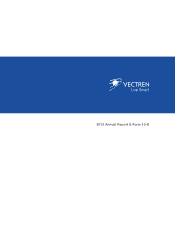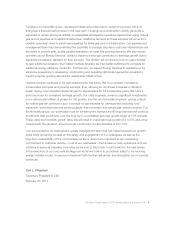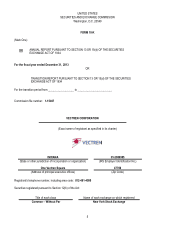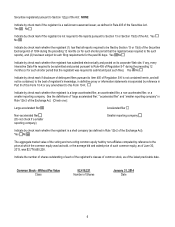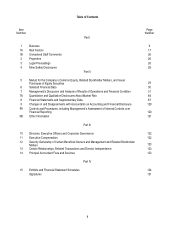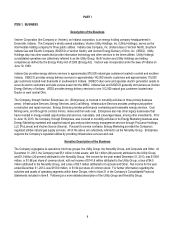Vectren 2013 Annual Report Download - page 4
Download and view the complete annual report
Please find page 4 of the 2013 Vectren annual report below. You can navigate through the pages in the report by either clicking on the pages listed below, or by using the keyword search tool below to find specific information within the annual report.Excluding a $37.5 million after-tax loss from ProLiance in 2013, Nonutility group results were strong at
$33 million, compared to $21.7 million in 2012. Infrastructure Services eclipsed its exceptional 2012
performance of $40.5 million by ending 2013 with $49 million in net income. This business is our
most significant contributor to nonutility results and has demonstrated tremendous growth over the
last three years. Earnings at Energy Systems Group (ESG), our Energy Services company, were $1
million, compared to $5.7 million in 2012. Their 2013 performance reflects continued lower revenues
from slow demand for performance contracting projects due primarily to budgetary constraints on
state, municipal and school customers. When looking at our remaining commodity-sensitive business,
Vectren Fuels, it was again challenged in 2013. Coal Mining reported a loss of ($16) million, compared
to a loss of ($3.5) million in 2012. While coal sales and related revenues were higher in 2013, results
were lower due to higher production costs associated with a thin coal seam and other unfavorable
mining conditions at our Prosperity mine. On a positive note, the April 2013 opening of the second
Oaktown mine helped drive improved results for much of the rest of the year, and by the second half
of the year, production costs at Prosperity improved as the revised mining plans were implemented.
As a result, we expect 2014 Coal Mining results will be much improved over 2013 levels.
As we look to the coming years, I expect Vectren’s earnings growth to continue. We’ve seen three
straight years of strong performance, proving our corporate strategy that was put into place in 2010 is
being executed as planned. Our Utility group will continue to be the primary driver of earnings, where
we’re targeting 3% annual earnings per share growth, and we should continue to earn at or near our
allowed return. Key to accomplishing this goal will be the ongoing success of our strategic sourcing
and performance management strategies where we’ve focused heavily on mitigating operating and
maintenance increases, which will continue driving continuous improvement efforts to gain efficiencies
and/or cost savings.
For our gas utilities, we’ve filed long-term plans to modernize infrastructure, most of the activity
being driven by increasing federal regulations around pipeline safety. In Indiana, we’ll invest nearly
$900 million through 2020, and in Ohio, we’ll complete similar infrastructure upgrades of more than
$200 million through 2017. Favorable legislation and regulation in each state will ensure much of the
incremental cost recovery occurs as the investments are completed. The expected short- and long-
term favorable outlook of moderate natural gas price levels will help keep customers’ bills affordable,
even as modest increases occur annually as a result of these required expenditures. Additionally, the
continued customer adoption of our conservation and energy efficiency programs will further aid in
maintaining manageable gas bills.
For our electric utility, our focus is on maintaining solid performance but doing so without significant
impact to customer bills. In early 2014, we filed with the Indiana Utility Regulatory Commission
seeking approval to invest $70 to $90 million to comply with three new Environmental Protection
Agency (EPA) rules, including the mercury air and toxins standard (MATS). However, we proposed
to not immediately seek cash recovery to avoid any near-term rate impacts to customers. Given the
more than $410 million we have spent on environmental controls over the last decade, coupled with
these new planned expenditures, our generation fleet should be very well-positioned to continue to
operate reliably and in compliance with various federal EPA requirements for years to come.
2

